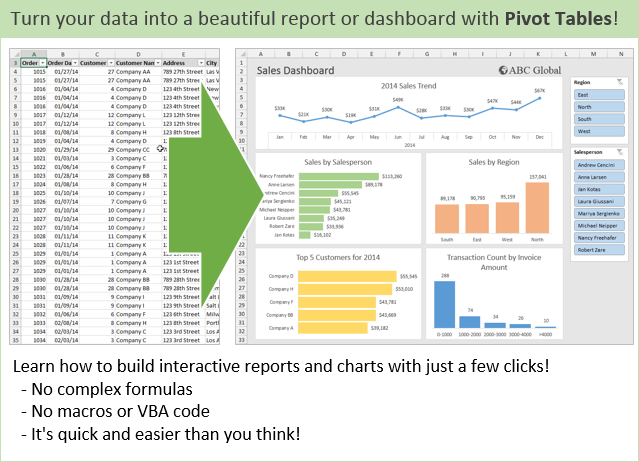
- #How to make pivot charts in excel 2016 how to#
- #How to make pivot charts in excel 2016 update#
- #How to make pivot charts in excel 2016 plus#
These columns will work for our purposes, but it is important to note that the data table will be a part of the Excel spreadsheet, and even the unselected columns can be brought into play (as filters, as categories). Basically, to create pivot tables, there need to be variables in the designated “rows” and “columns,” and there need to be values of some sort. In perusing the data, it looks like “F” / Topic is a data label, “D” is a spelled-out state indicator, “K” is a “Data Value,” and “O” and “P” are the lower and higher ranges for the 95% confidence intervals. (This article does not really make assertions about the specific data but is more about making PivotTables in Excel.) To make a pivot table, it is important to understand which data columns may be of interest. Optimally, data dictionaries would accompany datasets, so that the data may be accurately understood. Drag the field you want to use as the filter into the Filters box in the PivotTable Fields sidebar.It makes sense to know one’s data, but given clear data labeling and a sample of the data, it is not that difficult to understand data at least superficially (which is somewhat dangerous). Using our example, we want to filter the entire table to see each Department, one at a time. You can also apply a filter to the top level of the table. To sort, click the button and select a sort option.
#How to make pivot charts in excel 2016 how to#
To apply a filter to the column, click the filter button next to the header and choose how to filter the data as you normally would in an Excel table. You’ll see filters built-in for your first column and depending on your data arrangement, maybe more than one column. The perks of using a table in Excel include the ability to filter and sort your data as needed. RELATED: How to Use Excel's "Quick Analysis" to Visualize Data Filter or Sort the Pivot Table
#How to make pivot charts in excel 2016 plus#
Then, we simply use the minus and plus buttons next to each Location to expand the group and view the Departments.īecause you can move the fields between the boxes with simple drag-and-drop actions, this allows you to easily find the best fit for your data analysis. In this example, we have Department first and Location second in the Rows box which is how they’re grouped in the table.īut by moving Location above Department, we see each of our locations as the main fields instead, which is what we want. If you have more than one field in a box, the order determines the placement in the pivot table as well.

Alternatively, you can use the drop-down arrows next to the fields to move them.
#How to make pivot charts in excel 2016 update#
You simply drag that field from the Rows box to the Columns box and your table will update accordingly. RELATED: How to Change Date Formats in Microsoft ExcelĪs an example, we want to see our Months as columns instead of rows. These are the defaults for those types of data, but you can move them where you want them. This is where you will decide how you want to place them in your table.ĭepending on the type of data in your sheet, you’ll see things like numbers in the Values box, dates and times in the Columns box, and textual data in the Rows box. Note: You can check and uncheck boxes for the fields you want to use at any time.Įxcel then drops those fields into the boxes at the bottom of the sidebar where it believes they belong. Using the PivotTable Fields sidebar, start by choosing the fields at the top you want to include by checking the boxes. This Excel tutorial explains how to create a pivot table in Excel 2016 (with screenshots and step-by-step instructions). You’ll then see the pivot table and the PivotTable Fields sidebar, ready for you to build your table or edit the recommended table you inserted.

For analyzing multiple tables, you can check the box to add it to the Data Model. Then, decide if you want the table in a new worksheet or your existing one.

At the top, confirm the data set in the Table/Range box. You’ll see a window appear for PivotTable From Table or Range.


 0 kommentar(er)
0 kommentar(er)
